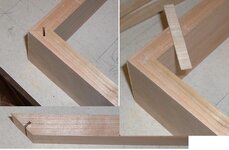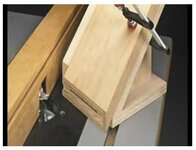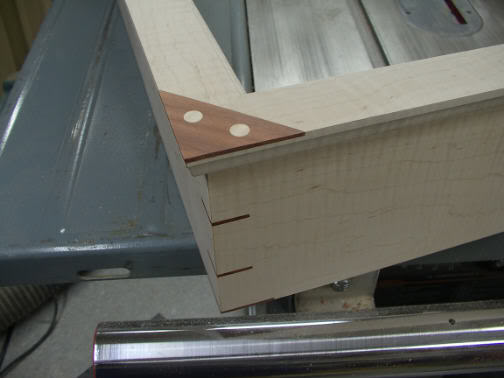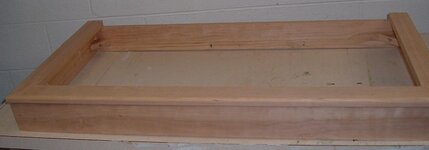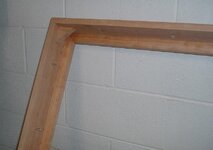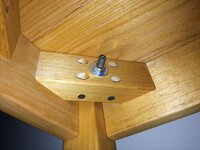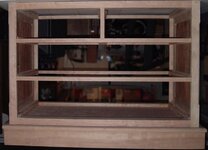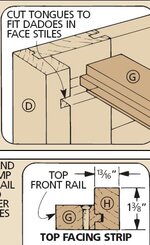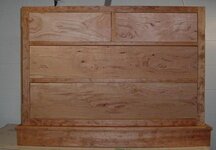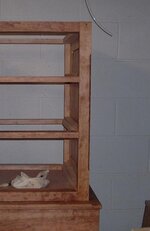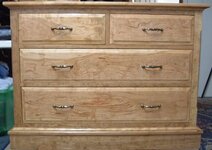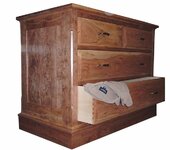Dale Allen
Member
Just as a future reference, I'd like to know how someone else would set this up and cut.
It's refereed to as a spline and the dresser plans I am working off of has it used on the base frame. I've not seen this before as I have not done much furniture building.
I set up the table saw with the fence on the left as the blade tilts to the right.
Then I cut all of the 45 degree cuts about 3/4 way through. This puts the spline cut in the piece. I did this so I could use the full end as a reference against the fence.
Then I switched to the fence on the right and cut the full miter. This is also done with the full end as a reference.
That seemed to make sense and it worked out very well. As long as everything is kept consistent the corners are near perfect.
The down side is having the cutoff pieces flying all over the shop when making the second cut. It gets a bit nerve racking.
Anyone have a different solution I could try in the future?
It's refereed to as a spline and the dresser plans I am working off of has it used on the base frame. I've not seen this before as I have not done much furniture building.
I set up the table saw with the fence on the left as the blade tilts to the right.
Then I cut all of the 45 degree cuts about 3/4 way through. This puts the spline cut in the piece. I did this so I could use the full end as a reference against the fence.
Then I switched to the fence on the right and cut the full miter. This is also done with the full end as a reference.
That seemed to make sense and it worked out very well. As long as everything is kept consistent the corners are near perfect.
The down side is having the cutoff pieces flying all over the shop when making the second cut. It gets a bit nerve racking.
Anyone have a different solution I could try in the future?

